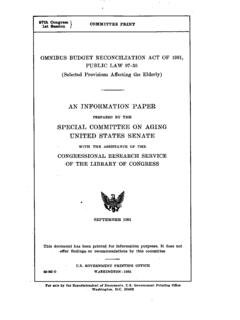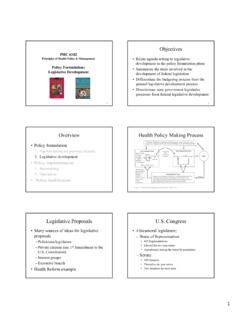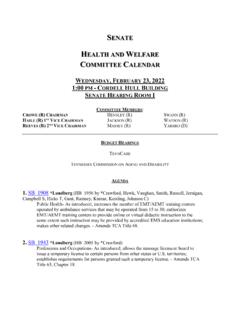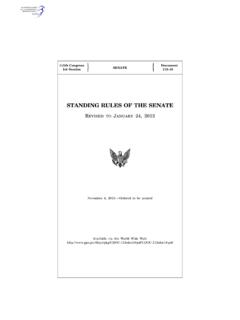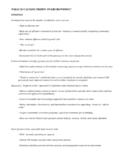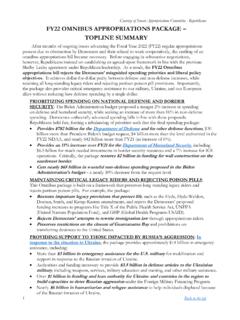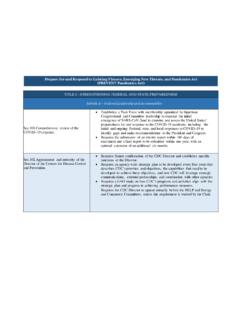Transcription of America’s Aging Workforce: Opportunities and ... - Senate
1 America s Aging Workforce: Opportunities and Challenges Special Committee on Aging United States Senate Senator Susan M. Collins (R-ME), Chairman Senator Robert P. Casey, Jr. (D-PA), Ranking Member December 2017 2 Senate Special Committee on Aging SUSAN M. COLLINS, Maine ROBERT P. CASEY, Jr., Pennsylvania ORRIN HATCH, Utah BILL NELSON, Florida JEFF FLAKE, Arizona SHELDON WHITEHOUSE, Rhode Island TIM SCOTT, South Carolina KIRSTEN GILLIBRAND, New York THOM TILLIS, North Carolina RICHARD BLUMENTHAL, Connecticut BOB CORKER, Tennessee JOE DONNELLY, Indiana RICHARD BURR, North Carolina ELIZABETH WARREN, Massachusetts MARCO RUBIO, Florida CATHERINE CORTEZ MASTO, Nevada DEB FISCHER, Nebraska Kevin Kelley, Majority Staff Director Kate Mevis, Minority Staff Director 3 EXECUTIVE SUMMARY From small towns in rural America to the country s bustling metropolitan centers, older Americans are playing an ever-growing role in shaping the nation s economy through work.
2 Whether they work on farms growing produce, in office buildings developing new technologies, or in hardware stores ringing up customers, Aging Americans are a critical and expanding share of the nation s workforce every day. With advances in public health and medicine, Americans are living longer and working longer, resulting in an unprecedented transformation of the workplace. The number of Americans over age 55 in the labor force is projected to increase from million in 2016 to million in 2026, and, by 2026, Aging workers will make up nearly one quarter of the labor force. These significant changes will present tremendous Opportunities and challenges. For the 55-year-old paper mill worker in Maine who worked from dusk until dawn every day for the past thirty years at a plant that just closed, training for a new career is a daunting task.
3 For the 62-year-old office manager in North Carolina who has become the primary caregiver to a husband living with Alzheimer s disease, staying at work while caring for an ailing loved one may be unmanageable. For the 57-year-old nurse in Pennsylvania with chronic back pain after a lifetime of physically demanding work, just staying on the job to pay the bills and cover the mortgage can be overwhelming. As the number of older workers steadily grows, so too will the number of Aging Americans confronting challenges like these day in and day out. At work, older Americans are productive. They can offer employers exemplary skills and experience as well as an exceptional work ethic. The business case for hiring, retaining, and supporting older workers is strong.
4 Leading employers have taken it upon themselves to institute policies and practices to harness the strengths of Aging workers. From providing employees with ergonomic office equipment and assistive technologies to establishing inter-generational training programs, family caregiver support initiatives, and flexible paths towards retirement, large and small employers who recognize and value the talent of Aging workers are taking steps to respond to one of the fastest growing demographic groups at work, older adults. The United States Senate Special Committee on Aging is committed to understanding, embracing, and addressing the Opportunities and challenges facing older workers. The Committee seeks to ensure that older workers are able to thrive at work and adequately prepare for retirement.
5 This report provides a summary of the landscape of the Aging workforce and key findings related to Aging workers as well as employers. The report concludes with a vision of how Aging employees and their employers can work together to ensure that they both prosper. KEY FINDINGS The number of older workers is growing at a rate that outpaces the overall growth of the labor force. In 2000, percent of those over 65 were working; by 2016, that share had increased to percent. Moreover, while the labor force as a whole is projected to grow by an average of just percent per year between 2016 and 2026, the number of 4 workers ages 65 to 74 is projected to grow by percent annually and the number of workers ages 75 and above by percent annually. Older workers take increasingly diverse paths to retirement.
6 Fewer older workers are transitioning directly from full-time work to full-time retirement. Many workers transition to part-time positions with their current employer or a new one, while others become self-employed. Current challenges make it more difficult for older workers to thrive in the workplace. Age discrimination, inadequate training Opportunities , working while managing health conditions and disabilities, balancing caregiving responsibilities with work, and preparing financially for retirement are among the main challenges facing an Aging workforce. The business case for age-friendly workplaces is strong. Hiring and retaining older workers can help employers retain valuable skills, address workforce shortages, and increase workplace diversity, which can contribute to improved outcomes.
7 Most employers acknowledge the trend of the Aging workforce; few are taking action. While 80 percent of employers say they are supportive of employees who plan to work past the age of 65, only 39 percent offer flexible scheduling options and only 31 percent facilitate processes for moving from full-time to part-time roles. A growing group of Aging workers are caregivers and some employers are implementing strategies to support them. One out of every four employees over the age of 50 serves as a family caregiver. Employers find that helping these employees balance their work and caregiving roles without sacrificing their personal financial security can reduce some employer costs as well and may attract talent. Many older workers are struggling to prepare financially for retirement.
8 Roughly one-third of workers do not have access to a retirement plan at work, and many Aging workers have not saved enough for retirement and may continue to work beyond when they intended to retire out of financial need. Work is linked with improved health and well-being. For many Aging Americans, work provides a sense of purpose. Research consistently links work with improved physical, emotional, and cognitive health , financial stability and security, and quality of life. The Senate Aging Committee aims to support the needs of Aging Americans, and with this report, seeks to help Aging workers and their families achieve the personal and professional goals they set for themselves. 5 Chapter 1: The Aging American Labor Force America s labor force is Aging .
9 The number of persons working past the age of 55 is at a historic high, and with 10,000 baby boomers turning 65 every day, understanding the implications of the growth and diversification of the Aging labor force is becoming increasingly In 2000, percent of those over 65 were working; by 2016, that share had increased to According to the Bureau of Labor Statistics, the number of individuals ages 55 and above in the labor force will grow from million in 2016 to million in While in 2006 workers ages 55 and over represented just percent of the American labor force, in 2016 they made up percent and by 2026 that number will rise to percent, accounting for nearly one out of four American workers. Older workers are shaping the American labor force.
10 While the number of individuals under age 35 in the labor force remained almost unchanged between 1996 and 2016, the number of persons in the labor force ages 55 and above grew by 124 These trends are expected to continue, with the fastest growth expected among the older groups of American workers. While the labor force as a whole is projected to grow by an average of just percent per year between 2016 and 2026, the number of workers ages 65 to 74 is projected to grow by percent annually, and the number of workers ages 75 and above by percent This transformation of the American labor force is unprecedented and presents unique Opportunities and challenges. The changing face of the average American worker will shape preferences about work and retirement, practices implemented by employers, the composition of the economy, and the direction of public policy.
